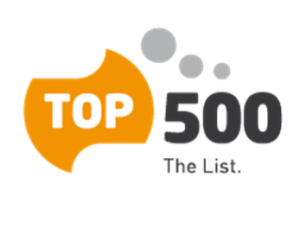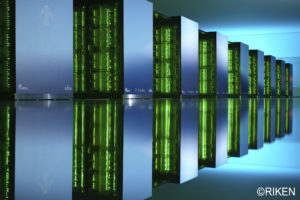The ISC High Performance show is typically about time-to-science, but breakout sessions also focused on Europe’s tech sovereignty, server infrastructure, storage, throughput, and new computing technologies.
This round-up sorts out some interesting and not-so-obvious observations that may go against the traditional HPC narrative. HPC companies also took shots at the media – indicating a growing awareness of stemming the spread of misinformation about technologies being used in supercomputing.
The Much Loved Top500 Still Useful
Supercomputer enthusiasts have a love-hate relationship with the Top500 list. Debates about the high-performance LINPACK benchmark can rage on forever.
However, the Top500 list still has fans, and some have talked about the HPL benchmark serving other benefits, like stress-testing systems.
Keynote speaker Kathy Yelick said Top500 is a good historical record of supercomputing’s evolution. Yelick is vice chancellor for research and distinguished professor in electrical engineering and computer sciences at the University of California.
 “I actually like the Top500 list because it provides an amazing historical record of where we’ve come. It is not perfect. It is not the thing we should use to drive machine acquisitions — that’s where I think we start running into problems, and certainly, we should not use it to design machines,” Yelick said.
“I actually like the Top500 list because it provides an amazing historical record of where we’ve come. It is not perfect. It is not the thing we should use to drive machine acquisitions — that’s where I think we start running into problems, and certainly, we should not use it to design machines,” Yelick said.
She added: “We need to be careful that [Top500] doesn’t become overly important in the whole ecosystem as we think about codesign and things like that if we’re especially going to design our own pieces of the hardware. I don’t think we should get rid of it. When you’ve got this exponential growth, it’s nice to have a single benchmark that you can use to look back historically … you just need to make sure you understand what it’s measuring and not [overemphasizing] it in terms of letting it drive the future.”
Mixed Precision
In a session, Erich Strohmaier, the Top500 organizer, reinforced why Top500 was important. The ranking provides a snapshot of limitations in scaling systems and where attention needs to go in system design.
Strohmaier pointed out supercomputer performance increases have been slowing down since 2017 and said not to expect a ten-exaflop system by 2030.
He didn’t bother to mention zettascale systems.
Strohmaier said AI and power efficiency were becoming important measures, with growing interest in the Top500 Green500 and HPL-MxP rankings.
Aurora, for example, was a mixed system designed for supercomputing and AI. It topped the AI supercomputing benchmarking at 10.6 exaflops, beating Frontier. Frontier was otherwise on the primary Top500 list and beat Aurora on the main high-performance LINPACK benchmark.
Strohmaier shared Yelick’s thoughts, saying they needed reliable AI benchmarks and industry participation to reach a consensus.
“We need better benchmarks and other benchmarks to look into that because there is a huge market out there, which we are not covering … dedicated towards AI workloads. And to really capture those systems and get some insight into what goes on in those markets,” Strohmaier said.
Stress Testing Systems
Rick Stevens, an associate director at Argonne National Labs, talked about putting Aurora systems through the wringer on high-performance LINPACK benchmarks to stress test systems. It served multiple purposes, including ensuring it didn’t break down quickly.
“This is a brand new GPU architecture on the market at scale. And it’s somewhat unusual to build a very large system as the first instance of technology because not only do you have to understand individual GPUs and the microarchitecture and how to get performance out of that, but you’re also debugging at scale, which pushes hard on the reliability of individual components,” Stevens said.
ANL is running stress tests to achieve the target MTBF (mean time between failure) to achieve stability so components can run for a long time without failure.
Between the Top500 Numbers
On the topic of the Top500, we spent some time in an Excel file on rankings and came up with some interesting observations. Here are some numbers:
- Total performance of the systems: 8.2 exaflops
- Total theoretical max performance: 12.5 petaflops
- The percentage taken up by Aurora and Frontier: About 27%
- The % total of max performance versus theoretical max: 65.6%
- The total number of CPU cores: 114 million
- The total number of accelerator cores: 48.8 million
- Total cores: 162.8 million
- Total number of CPU and accelerator cores in top 20 supercomputers: 93 million, or about 57%
- Average Top500 CPU speed: 2.1GHz
- Number of systems running Linux: 100%
- Average CPU cores per socket: 38
Interconnects:
- Proprietary: 8 (Tofu Interconnect)
- Custom: 26
- Gigabit Ethernet: 195
- Infiniband: 239
- Omnipath: 32
Precision Computing: Will Hardware Fall to the AI Blackhole?
Yelick mentioned that HPC should look beyond simulation and modeling and embrace new types of computing, such as AI. High-precision computing will remain important for exacting science needs, but change is coming with AI and other applications.
“Back in 2007, there were a series of town halls and … international meetings like this and discussions about exascale computing, software stack, and international effort and things. The perspective was still pretty focused on modeling and simulation — modeling simulation will continue to be an important application of high-end systems. But it’s not the only application that I think we need to worry about,” Yelick said.

A more practical concern for scientists is whether high-precision GPU capacity will be consumed in the AI black hole. As more GPUs are assigned to training and inference, will VMs be available for conventional scientific computing tasks like simulation and modeling?
An audience member asked Microsoft’s Nidhi Chappell, vice president and general manager of Azure AI and high-performance computing infrastructure, a question about that.
“We have multiple different offerings within our own portfolio. Some of them are very much optimized for high-precision workloads. And some of them are very much optimized for AI at scale,” Chappell said.
Labs Extending Life for HPC Systems
A typical supercomputer lifecycle is about five to six years. Panelists said supercomputers can become expensive to maintain after the lifecycle ends. In many cases, system builders stop servicing the hardware once the contract ends.
But Satoshi Matsuoka, director at Japan’s RIKEN Center for Computational Science, said there are plans to keep the Fugaku supercomputer around for ten years, and it will continue to be efficient in data movement and power efficiency.
Lawrence Livermore National Labs normally plans a five-year lifetime but has run some systems for 7-10 years in some cases.
The systems serve a purpose, and still be reasonably efficient in terms of power usage for the types of HPC workloads it runs, which are heavily memory and data movement bound.
A number of considerations go into retaining systems for longer, including energy efficiency of the current equipment, utility of the hardware, and the cost of maintenance. New systems are also expensive to build.

The Fugaku supercomputer is hands-down one of the best architected systems ever built, and has a solid combination that balances computing, data movement and power efficiency.
High-performance computing is mostly data—or memory-bound, and efficiency in both will remain high. “Even at ten years, [Fugaku] will be reasonably power efficient,” Matsuoka said.
There may be an overlap for RIKEN’s next computer system, FugakuNEXT. “We plan on keeping it for a two—or three-year overlap, and also because we think it’s worth it,” Matsuoka said.
Revenge of the Nerds
Companies used the ISC floor to take swipes at a major enemy: Media. Mainstream media has joined the tech journalism party by writing crazy stories about Sam Altman’s trillions for AI chip factories, and Microsoft’s sci-fi $100 billion Stargate supercomputer.
Computing infrastructure and AI companies are some of the hottest on this planet. The media juggernaut always follows the money or lack thereof.
Moderators at an Eviden—the IT infrastructure division—vendor spotlight session asked Bruno Lecointe, a company executive, to clarify the company’s direction. Atos, Eviden’s parent company, is in the process of being acquired after years of financial struggles.
 To be clear, the company’s fundamentals look more like AMD during its worst days, with stock prices hovering at around all-time lows, failed acquisition attempts, and multiple CEO changes within the last few years.
To be clear, the company’s fundamentals look more like AMD during its worst days, with stock prices hovering at around all-time lows, failed acquisition attempts, and multiple CEO changes within the last few years.
Lecointe said a lot of misinformation was going around. He assured the audience that the company is righting the ship.
“There is a lot of fantasy around. That’s probably because some journalists need…to invent some stories. Maybe some competitors are also playing with that,” Lecointe said.
HPCwire recently published a story about Atos’ direction from the session, and hopefully, we got the facts right.
Another beware-of-the-media-warning came from Microsoft’s Chappell, which is more understandable. She sportingly answered a question on speculation around “Stargate,” a rumored $100 billion supercomputer with millions of GPUs.
“You shouldn’t always trust everything that is written in the media,” Chappell said, shooting down any Stargate talk.
“We continue to push the boundaries of what is possible for AI… we are doing some things at a very large scale,” Chappell said.
“Those are things that I cannot talk about publicly, but all I will just say is training does require lots of GPUs communicating to be able to deliver the capabilities, and we are on multiple generations – to deliver that every generation surpassing the previous generation significantly,” Chappell said.


























































